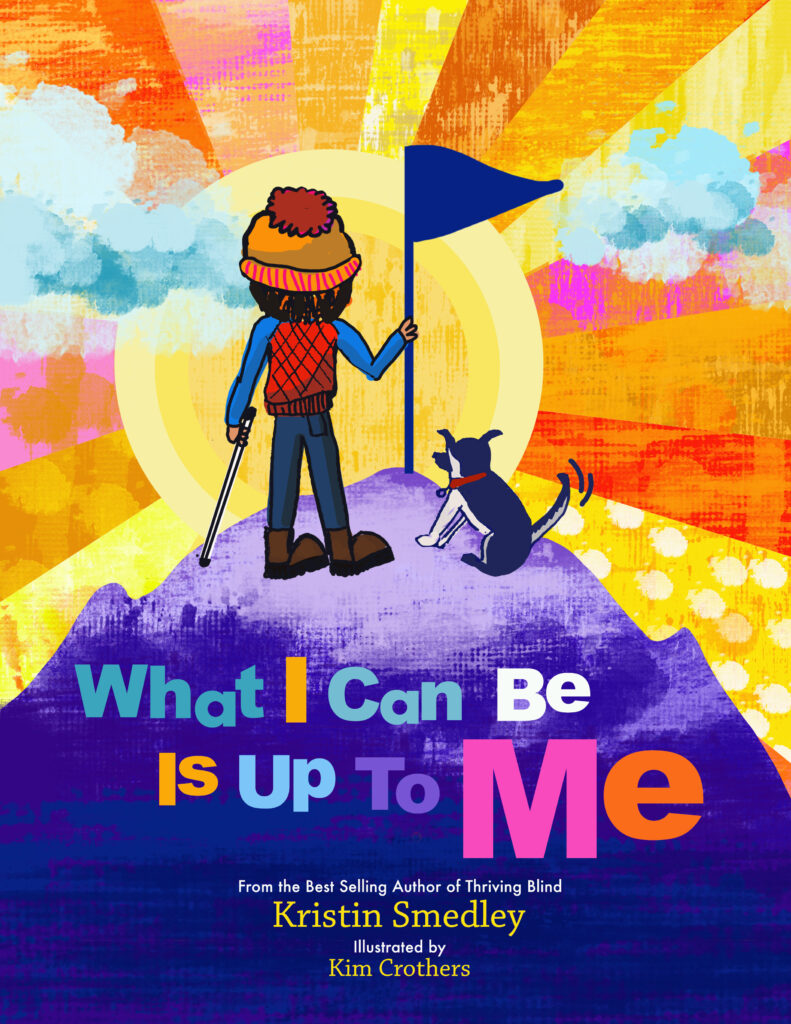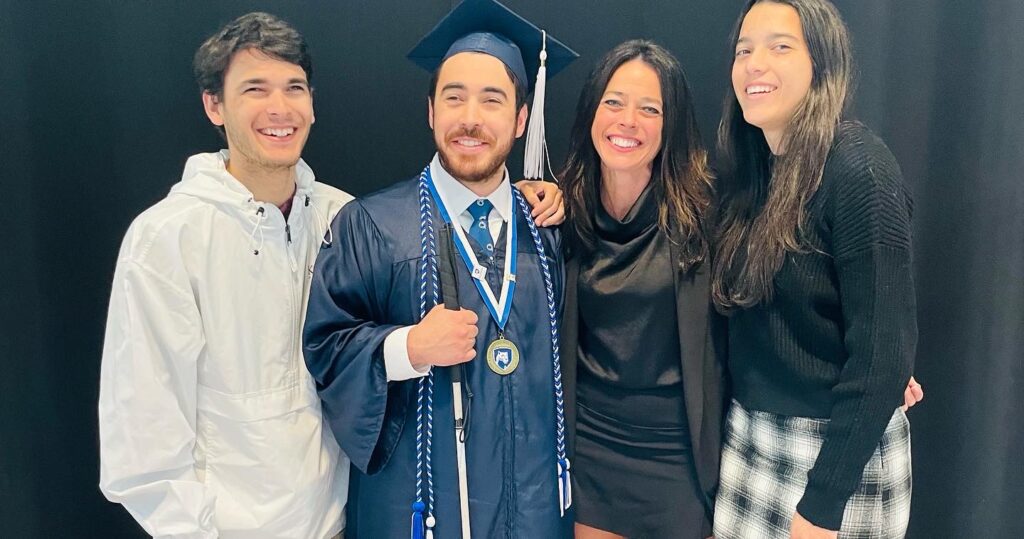This content is also available in:
Español (Spanish)
I had a plan. Get the degree, land the job, marry the guy, build the house, and have the baby. It was a perfect plan, and I executed it flawlessly. In the year 2000, I had everything I had ever planned for.
Until the curve ball.
“Your son is blind.” Those four words sentenced me to a dark place I didn’t plan for. Before that day, I had never met a blind person. Fear and panic overwhelmed me. I didn’t know what the future held for my son or his brother, who was also born blind three years later.
I vividly remember pounding my fist, crying out in the ugliest cry, “My life should look a lot different! My boys should see my smile; they should be reading words; they should be noticing the wonderful world they live in!” I was stuck in so many “should be’s.”
In my TEDx talk, I revealed that eventually, I had a life-changing experience that shut the door on “should be” and opened my mind to what “could be” for my boys. I chose to stay open to see what could be possible for their lives. Deciding to see the journey differently is one thing; I had no idea how to take the next proper steps to do it. It was quite clear that I would need to find someone thriving in a world not built for blindness – and find out how they did it.
Ignite!
I will never forget the day I finally met a successful person that is blind: Erik Weihenmayer. More importantly, I will never forget experiencing my son, Michael, meeting Erik that day. Michael was six years old, and Erik had just become the first blind person to summit Mt. Everest! I watched them chat, laugh, and snicker about the weird things sighted people do.
I witnessed Michael’s mind blow wide open with possibility as he talked with a guy just like himself, blind, that had just done something cooler than any sighted person he had ever met! He experienced Erik’s confidence and excitement for life. It was priceless and so necessary.
Meeting people like Erik and so many others that are thriving with blindness gave my boys proof that they have unlimited possibilities for their lives too. Role models ignite my blind sons to believe in themselves and believe the lives of their dreams are possible. Believing in yourself and your dreams is a foundational success principle necessary to thrive, especially in a world with a negative bias against blindness, seeing it as a barrier and a burden.
Crisis
The negative bias against blindness comes from the story that’s been told about it for too long: people who are blind or low vision cannot fully participate in society. That negative narrative has been adopted by employers who refuse to hire qualified blind workers, by school systems that refuse to educate blind students properly, and by society, in general, believing a person that is blind is less than. People that are succeeding without sight know that story is untrue. However, the majority of people that are blind or low vision have been told that inaccurate story about blindness for so long that they believe it too.
The result of the inaccurate story about blindness is a decades-long crisis for the blind and low vision. Retina International recently reported that the cost to our economy of not thriving with blindness is $31.7 billion (Cost of Illness Study, 2021). That massive financial impact is caused by:
- 70% unemployment rate in the blind community
- 70% high school dropout rate
- 85% college dropout rate for students that are blind.
The education, employment, and financial crisis in the blind community directly result from the untrue story about blindness.
Seeing, knowing, and experiencing the impact of successful role models on my sons is why I wanted a new story about blindness to be shared. I wrote my first book Thriving Blind: Stories of Real People Succeeding Without Sight to share with other parents like me, and knowing what is possible changes how we guide our children. We guide them to thrive, not just survive.

But wait, there’s more: The Missing Piece
While a parents’ view of blindness is essential, the belief in the possibility of success must ultimately be in the child themselves. Most children that are blind or low vision never meet another child or person like themselves. Their classroom and home libraries don’t have books featuring people like them living exciting lives. They aren’t aware of the true stories of blindness. Compounding the issue is that sighted children do not have information about people thriving with blindness and low vision. That lack of education perpetuates a negative bias against blindness.
Michael was in first grade when he met Erik Weihenmayer. At that young age, he established a foundational belief in himself to succeed, and he knew it did not matter what the world believed about him. Believing in himself has given Michael the tenacity to keep pursuing his dreams regardless of the many, many barriers he has encountered. Michael recently graduated from Penn State University, summa cum laude in two majors, and is working his dream job as a Sound Engineer at Disney World! Imagine if all first graders could have that same successful belief about themselves and those who access the world differently.
“What I can be is up to me. Because you see, I believe in me!”,
I have written a new story that will change how the youngest eyes see blindness and low vision and ignite all young children to know that they have the power within themselves to create the life they want. What I Can Be Is Up To Me is a fun, engaging story that introduces young readers to real-life people who do interesting things. With rhythmic, action text, it invites readers to see themselves in the jobs those featured have. Each page has an exciting action for the reader to envision and act out (a mountain climber climbing! climbing! climbing! An artist painting swoosh! swoosh! swoosh!). All the people featured are blind or low vision. A low-vision artist created all the artwork and includes picture descriptions. The entire book has print and braille, making it accessible to all.

From Surviving to Thriving
When I heard the words, “Your son is blind,” I was scared and devastated because of the grim statistics and felt incredibly alone. No one in my playgroups understood my journey. No one in my family understood. I didn’t have another mom, friend, or anyone to talk with about this unique journey for a long time. Finding people who understood my journey took time. Even longer to find those focused on fun, joy, and thriving. Now, I’m honored to lead a community of thrivers. We navigate a world not designed for blindness. We share our wins and losses, mentor for success, and have lots of fun doing it.
www.ThrivingBlindAcademy.org is a wonderful place to be if thriving is your goal!

I never planned on raising children that are blind. I never planned to be an author or create a global community to end the crisis in the blind/low-vision community. But when I released my expectations and opened my eyes and heart, things changed. My children and I began a journey. It brought more highs than lows, more smiles than tears, and more amazing experiences than I could have ever imagined. I welcome you to connect with us at Thriving Blind Academy!